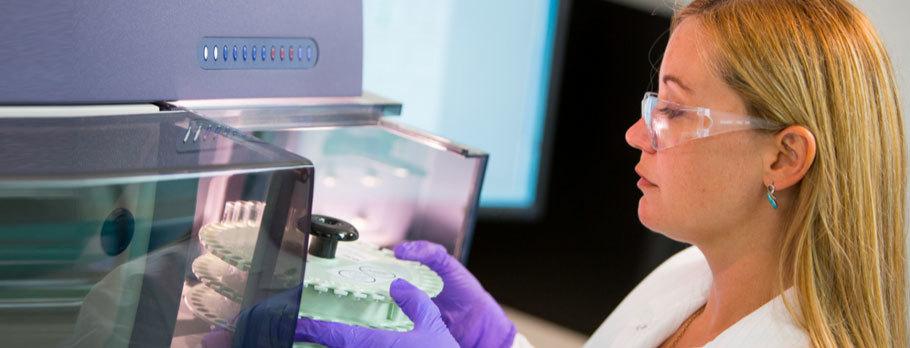
Cell and Gene Therapy Lesson 2: Remarkable Therapies Call For Complex Clinical Trials

Peter Wunderli, Ph.D., research fellow, PPD Laboratories, GMP lab, and Heather Myler, Ph.D., director, PPD Laboratories, bioanalytical lab, explain cell and gene therapy trials’ complexities.
Cell and gene therapy (CGT) testing in humans was initiated at the National Institutes of Health (NIH) in 1989. The study involved the genetic tagging and reinfusion of harvested tumor infiltrating lymphocytes (TIL) to patients to study their ability to migrate to the tumors. Since that study concluded that it was possible to safely reintroduce genetically modified human cells—and despite some significant safety issues observed in early trials—interest in these products and clinical trials including them have been dramatically increasing. As of November 2017, almost 2,600 clinical trials for what are classified as Advance Therapy Medicinal Products (ATMP) have been completed, are ongoing or have resulted in approved products in 38 countries worldwide,1 and there are an almost equal number of products in research and pre-clinical phases.2
While the vast majority of cell and gene therapy clinical trials are in phase I and I/II (early phase), the proportion of trials now in late phase (phase III/IV) has been growing. By demonstrating that gene modifications introduced are stable within the targeted cells, early phase trials are demonstrating proof‐of‐concept for gene therapy, even in cases when they have failed to achieve a clear therapeutic benefit. This includes early cell and gene therapy trials of products targeting primary immunodeficiency disorders, hemophilia A and B, X‐linked adrenoleukodystrophy (X‐ALD) and a growing list of other targets, many of which are showing clinical benefit and on a path to approval. An early trial of a therapy for X‐ALD was particularly important in that it showed that lentivirus vectors could demonstrate efficacy in treating an otherwise fatal disease of the central nervous system.1
“This is important. And in hemophilia, for instance, key stakeholders such as patients and physicians will need to be convinced of durability of constitutive [protein] expression, as well as long-term safety,” says Panteli Theocharous, global biopharma medical lead at PPD.
The first gene therapy product was approved in Europe in 2012, but that adeno associated viral (AAV) vectored product targeting lipoprotein lipase deficiency (LPLD) was taken off the market in 2017 because of regulatory and commercial limitations. However, two AAV vectored products for monogenic diseases have recently been approved.
Clinical success has also been demonstrated for immunotherapies, using adoptively transferred autologous T cells with lentivirus and gamma‐retroviral vectors to modify tumor recognition by introducing chimeric antigen receptors (CARs) to target tumor-associated cell surface antigens. Two current CAR T cell products target the CD19 antigen on B cells, and have been approved by the Food and Drug Administration (FDA) for non-Hodgkin’s lymphoma (NHL) and acute lymphoblastic leukemia (ALL), respectively. As of December 2018, there were 29 cell and gene therapy products authorized worldwide.3
“This is important. And in hemophilia, for instance, key stakeholders such as patients and physicians will need to be convinced of durability of constitutive [protein] expression, as well as long-term safety.”
There are multiple guidance documents issued by regulatory agencies regarding the current recommendations and expectations for pre-clinical studies, potency testing, chemistry manufacturing and control (CMC) and other issues relating to these products. The FDA issued a guidance specifically for early-phase clinical trial design in 2015, providing rationale for how and why clinical trial designs for CGT products often differ from those for other types of pharmaceutical products.4 These include the unique characteristics of these products and previous clinical trials, significant morbidity and mortality risks identified with early CGT product trials (including organ failure, leukemia and other tumors). Other risks result from the invasive nature of some administration routes, introduction of prolonged biological activity and enhanced potential for immunogenicity.4
“Being able to monitor and abrogate cytokine release syndrome will be crucial, as well as other related toxicities, including neurotoxicities. Development of biomarkers here would be worthwhile, as well as being able to predict and stratify patients based upon risk”
Manufacturing process requirements, logistics for treatment applications and limitations in preclinical assessments of CGT products drug metabolism and pharmacokinetics (DMPK) can also impact clinical trial designs unique to these product types.4
As identified in the guidance, these factors impact the design expectations of early-phase clinical trials of CGT products, and sponsors of such therapies should engage in early and extensive dialogue with regulatory agencies to discuss the following (and more): preclinical studies and proposed clinical study design; overall bioanalytical strategy including the number and applications of biomarkers and proposed endpoints; disease-specific clinical response assessments needs and plans for long-term patient follow-up; assessment of potential for expedited development (orphan drug, breakthrough therapy). These discussions regarding planning and compliance can significantly impact the development plan.5
Other information, such as engagement in patient communities, will provide input on the disease and help in the selection of appropriate endpoints. Early engagement with potential early-phase patients can also accelerate patient recruitment for trials that target demonstration of safety that may not result in individual clinical improvement.5 The high cost of these ATMPs and approaches to reimbursement should also be considered early, as generation of meaningful data will support a determination of value and can also impact the clinical plan.5
PPD has more than 21,000 employees with 97 offices in 46 countries, supporting all aspects of drug development including laboratory services, market access and value assessment, product development and regulatory strategy and early phase to post-approval clinical execution. PPD has also supported more than 60 cell and gene therapies in the last five years alone. To learn more about our laboratories experience, visit our labs page.